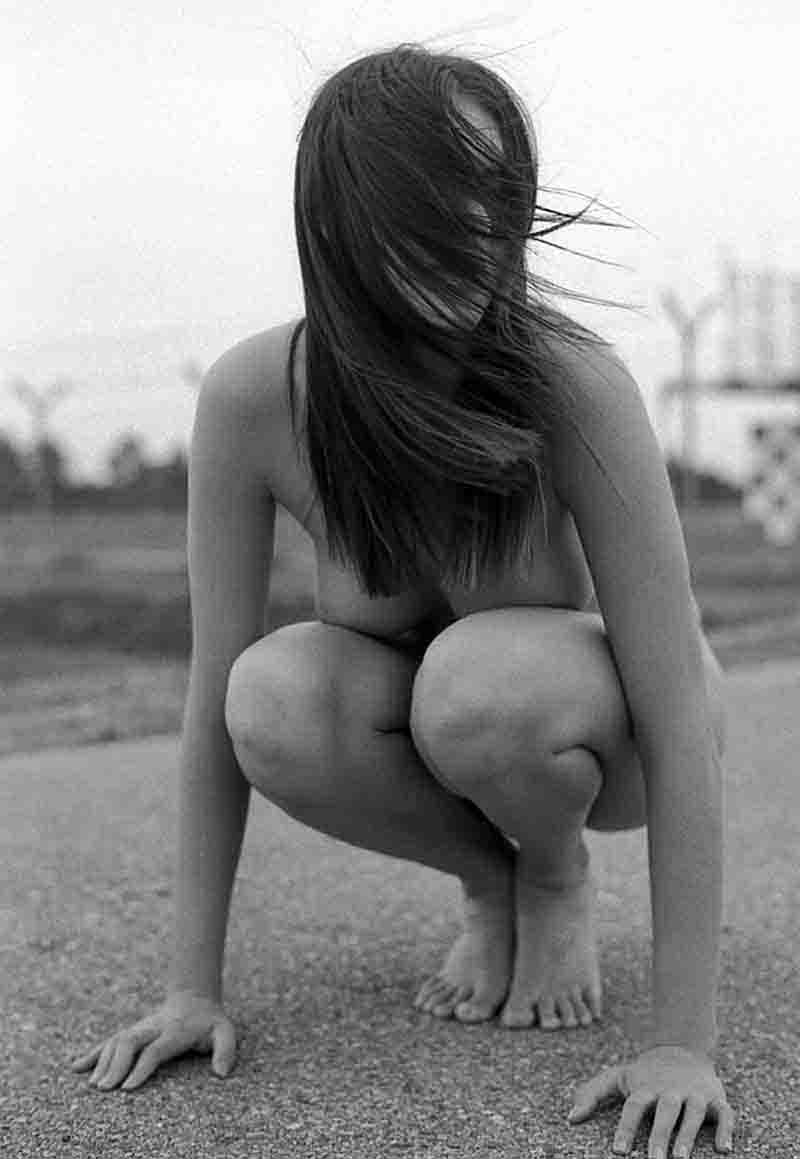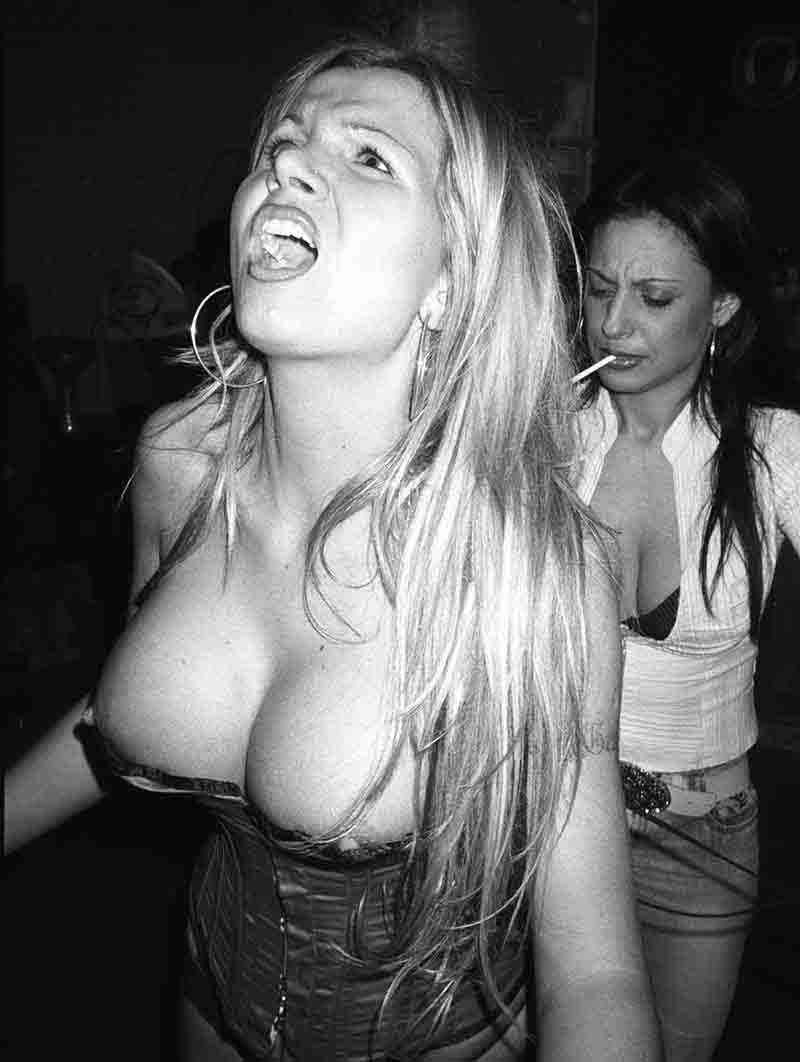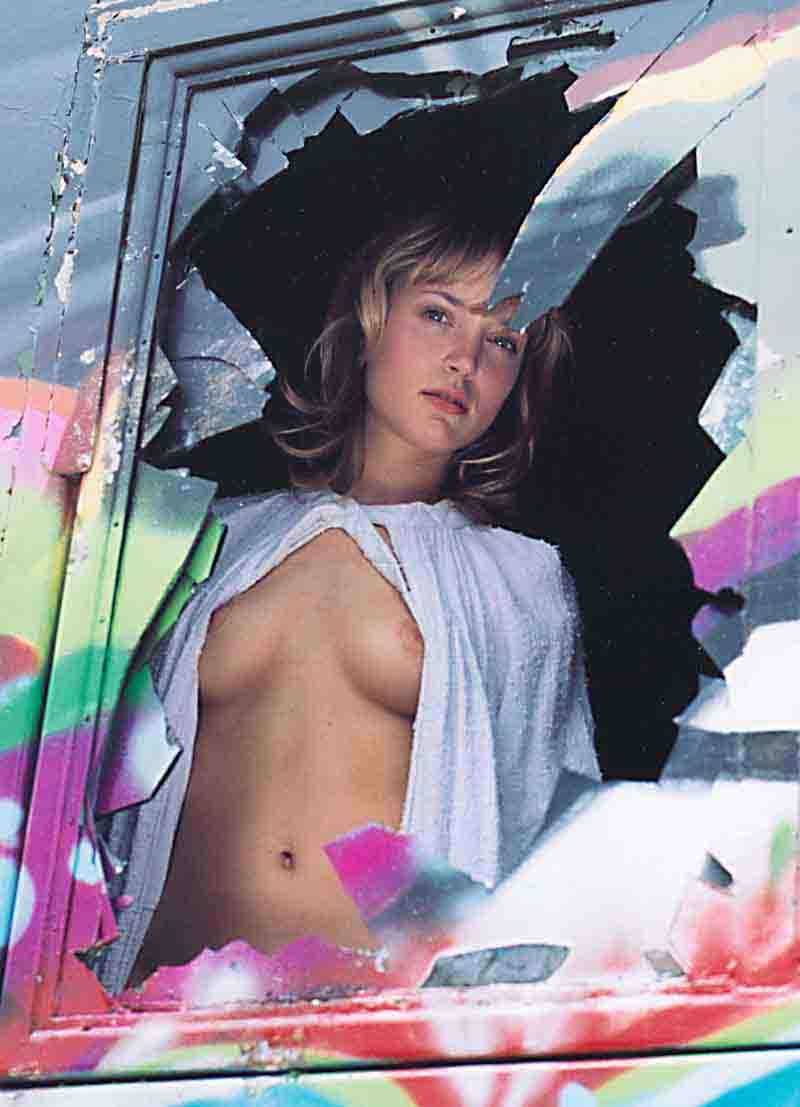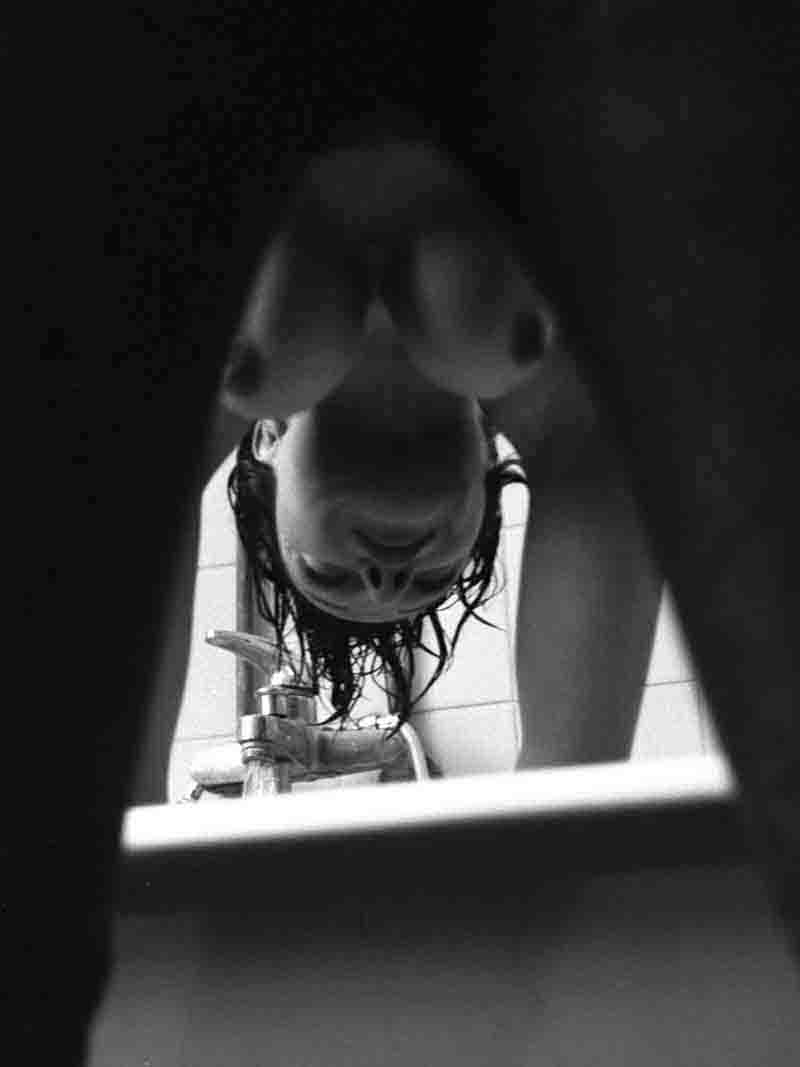Exploring Depth and Detail: The Art of Nude Photography
Nude photography focuses on the artistic representation of the human form. This genre emphasizes aesthetics, composition, and lighting to highlight the beauty and complexity of the body. Photographers aim to convey emotions and themes, creating images that challenge perceptions and celebrate the human form in its most natural state.

Each nude photograph offers a glimpse into the artist's perspective on beauty, vulnerability, and identity, inviting viewers to reconsider their perceptions of the human body and its artistic significance.
An essential aspect of concept development is ethical considerations.
Photographers must ensure that their subjects are treated with respect and dignity.
This involves clear communication and consent, ensuring that the model is comfortable with the concept and execution of the shoot.
Lovers of Fine Art Nude Photography
Erotic nude photography is a genre that deals intensively with the artistic depiction of a person's natural body.
This genre of fine art combines technical skill with an eye for beauty, creating images that provoke thought and elicit emotional responses.
The core elements of this style of photography are composition, lighting, and pose.
Nude art photography holds a significant place in contemporary art.
Whether you are a curator, enthusiast or art collector, tasteful erotic photos enrich our understanding of art and humanity.
Sensual nude photography is a dynamic and ever-evolving medium that reflects and questions social norms, embraces embodied expression and encourages the viewer to reflect on the complexity of human existence through visual narration.
Inspiration for nude photography stems from diverse sources such as nature, emotions, and other art forms. Themes range from vulnerability and strength to beauty and imperfection. Ethical considerations are paramount, ensuring respect and dignity for the subjects.
12 Most Important Facts About Nude Photography
-
Fine art nude photography: The artistic representation of nudity in photography, which emphasises the aesthetics, form and emotional expression of the human body as a central theme.
-
Historical Roots: This genre has ancient origins, with classical sculptures and paintings celebrating the human body. It has evolved over time, reflecting changing societal attitudes and artistic movements.
-
Key Elements: The main components of a compelling nude fine art photograph are composition, lighting, and pose. Each element plays a vital role in highlighting the subject's form and conveying the photographer's vision.
-
Ethical Considerations: Respect and dignity for the subjects are paramount. Clear communication and consent are essential, ensuring that models are comfortable with the concept and execution of the shoot.
-
Influential Artists: Many celebrated photographers such as Edward Weston and Helmut Newton have shaped this genre. Emerging talents remain innovative and challenge the norms with new methods and perspectives.
-
Human Form: The representation and exploration of the human body through the lens of photography, exploring different artistic approaches and interpretations in different historical and contemporary contexts.
-
Techniques: Photographers are dedicated to the technical aspects and methods of nude photography, including camera settings, lighting setups, posing techniques and post-processing methods with the aim of enhancing the artistic and narrative impact of the images.
-
Composition: In erotic photography, photographers compose their images. Principles such as balance, symmetry, framing and perspective are discussed in order to create visually compelling and harmonious compositions.
-
Posing: The Art of Nude Photography explores how different poses convey emotions, narratives and themes, contributing to the photograph's overall artistic expression and visual impact.
-
Aesthetics: Aesthetic principles and qualities such as grace, emotion, intimacy, vulnerability and the exploration of the human form and identity define nude photography as an art form in its own right.
-
Exhibitions: Organising and curating exhibitions of nude photography, discussing themes, curatorial practices, exhibition design and the role of exhibitions in presenting and promoting the work of artists.
-
Valuation: Factors that influence the valuation of nude photographs include the artist's reputation, rarity, provenance, condition, market demand and historical significance, which in turn influence the price and possible future prospects and potential return on investment.
Erotic nude photography not only challenges conventional perceptions but also elevates the human form to a powerful artistic statement.
Nude Photography: Timeline
Nude photography has a rich and complex history that intertwines with the evolution of photography itself.
Emerging in the early 19th century with the invention of the medium, photographers quickly began exploring the nude human form as both a subject of artistic expression and a technical challenge.
Initially controversial and divisive, nude photography gradually gained acceptance as artists and photographers from different movements and eras overcame social norms and artistic conventions.
| Year | Milestone |
|---|---|
| 1850s-1860s | Early Pioneers: Photographers like Félix-Jacques Moulin, John Jabez Edwin Mayall, and Julia Margaret Cameron start exploring nude photography. |
| 1870s-1880s | Pictorialism and Soft Focus: Pictorialists like Alfred Stieglitz and Clarence H. White begin using soft focus and naturalistic styles in nude photography. |
| 1900 | Artistic Movements: Nude photography becomes intertwined with art movements like Symbolism, Art Nouveau, and early Modernism. |
| 1910s-1920s | Avant-Garde Experimentation: Dadaists and Surrealists, including Man Ray and André Kertész, push boundaries with innovative nude photography techniques. |
| 1930s-1940s | Human Form and Social Commentary: Edward Weston and Imogen Cunningham explore the human form in intimate and socially provocative ways. |
| 1950s-1960s | Eroticism and Glamour: Helmut Newton, Irving Penn, Dianora Niccolini, and Robert Mapplethorpe redefine nude photography with a focus on eroticism and fashion. |
| 1970s-1980s | Feminist Perspectives: Feminist photographers like Cindy Sherman and Barbara Kruger critique and challenge traditional representations of the nude. |
| 1990s | Digital Revolution: Digital photography transforms the medium, allowing for new forms of manipulation and expression in nude art photography. |
| 2000s-Present | Diversity and Inclusivity: Contemporary photographers explore themes of diversity, identity, and body positivity in nude photography. Social media and online platforms democratize access and distribution. |
This table provides a chronological overview of significant milestones and shifts in the history of nude fine art photography, highlighting key figures and movements that have influenced its evolution over time.
Capturing the Essence: Secrets of Nude Photography

Nude fine art photography offers a visual stimulation and profound exploration of human expression and perception, making it a vital component of the contemporary art discourse.
Nude meets Photography
The evolution of nude photography from the pioneering beginnings of daguerreotypes to the AI-generated reality of today demonstrates a fascinating development in both technology and social mindset.
Nude Photography: Early Studios
During the early 1850s, with the advent of photographic studios and the trend for family portraits, a number of visionary photographers recognised the creative potential of nude photography.
Inspired by Greek and Roman sculptures and Renaissance masterpieces, these pioneering photograhers created classical motifs based on figures and scenes with a realistic depiction that were both compelling and controversial.
Commercial and Artistic Exploration

Nude, sensual and erotic photography is an experience outside the "norm" but is becoming increasingly accepted.
These early erotic photographs were by no means just for artistic purposes, but were a great commercial success.
Paris quickly became a hub for the erotic photography trade, with the number of photo studios rising from 13 in 1848 to over 400 in 1860, with many specialising in the production of explicit nudes.
By 1855, the sale of nude photographs had gone underground to avoid persecution.
Explicit nude photographs were sold discreetly near railway stations, by travelling salesmen and by female traders on the street.
Sensual nude photo-sets were shipped internationally, with England and the United States being the most important export markets.
The erotic photographs of this era often depersonalise their subjects by removing ardour and affection
Under the guise of scientific studies, photographers began to depict women of exotic ethnicities, adding another layer to the already complex narrative of nude photography.
Some countries banned postcards with sexual innuendo or nudity, although this did not deter their production.
French postcards of nude women were sold discreetly to tourists, often under the counter, reflecting the continuing demand and cultural objections.
Viewing Nude Photography

Nude art photographers combine technical skill with an eye for beauty, creating images that provoke thought and elicit emotional responses.
In the 1920s and 1930s, Julian Mandel, a member of the German avant-garde group "Neues Zeitalter im Freien", became a notable figure in nude photography.
Mandel's works, mostly set in natural environments, contributed to the German "new open-air movement" and were publicised by Parisian studios.
His models struck classic poses that smoothly combined art and the natural world.
Nude Art Photo and the 20th Century
Some of the most famous nude photos were taken in Hollywood in the late 1940s. Red velvet lies on the floor, poured out in gentle waves, on which Marilyn Monroe lounges. "No, nothing was on, except the radio"
Playboy Magazine, founded in 1953, introduced erotic photography to the mainstream and completely transformed the men's magazine market.
In the 60s and 70s, nudity was declared a natural choice by the up-and-coming feminist liberation movement.
The 20th century closes with a straightforward self-understanding attitude towards nude images
WWW Nudes

Each element plays a crucial role in creating a compelling nude art image.
The advent of the internet has fundamentally changed the proliferation of nude photography.
While social media channels ban any form of nudity, you can now find virtually all kinds of sexual content on a number of particular platforms.
From the secret daguerreotypes of the 19th century to the bold digital explorations of the 21st century, erotic photography has constantly evolved, reflecting and contesting social norms.
It remains a powerful form of artistic expression that emphasises the beauty and complexity of the human physique.
The Beauty of Nude Photography
The pictorial presentation of the nude body is a pinnacle of photography.
Beyond mere exposure, it is a craft that combines artistic and sensuality, capturing the female shape in its most harmonious and expressive state.
-
Artistic Depictions: Before the advent of photography in 1839, nudity and erotica were primarily depicted through paintings, drawings, and engravings. These forms of art laid the groundwork for the acceptance of nude imagery.
-
Adah Isaacs Menken: Stage actress Adah Isaacs Menken, active between 1835 and 1868, became the first known entertainer to pose nude for photographs, marking a significant moment in the intersection of celebrity and erotic photography.
-
Rise of Studios: In the early 1850s, as photography studios opened, family portraits became a trend. Photographers, recognizing the potential for artistic expression, started exploring nude photography.
-
Sensuality and Art: Early daguerreotypes, though often intended as artist’s studies, carried a sensuality that implied erotic or pornographic purposes.
-
Underground Market: The rapid expansion of photography studios in Paris led to a robust underground market for illicit nude images, sold widely and discreetly due to legal constraints.
-
Disguised Erotica: Muybridge’s work included both men and women, but his female subjects were often given props like market baskets and fishing poles, making the erotic nature of the images less overt.
-
Prominent Figures: Photographers like Walter Bird, John Everard, Horace Roye, Harrison Marks, and Zoltán Glass became known for their work in nude photography.
-
Mainstream Popularity: Playboy, founded in 1953, brought erotic photography into the mainstream, establishing a market for men’s and lifestyle magazines.
-
Impact of the Internet: The spread of the internet in the 1990s and growing social liberalization led to a resurgence in erotic photography. Numerous online publications and websites emerged, catering to diverse tastes and competing with established magazines like Playboy and Penthouse.
Nude photography is frequently displayed in galleries and exhibitions, where it is valued for its artistic merit and ability to challenge viewers' perceptions of nudity and art.
Mastery of Form: Nude Photography
Beyond its aesthetic appeal, nude photography serves as a powerful tool for social commentary.
Nude fine art photography, when expertly curated, becomes a dialogue between artist and viewer, transcending mere visual representation to provoke introspection and evoke emotion.
The genre's ability to provoke critical dialogue and challenge norms solidifies its place in the pantheon of fine art.
Nude Photography: FAQ
Are you curious about music, art, technology, fashion, lifestyle, and beer?
If so, then you need to subscribe to the free Likewolf newsletter.
100% privacy. When you sign up, we'll keep you posted.
The Human Canvas
Deconstructing Desire
